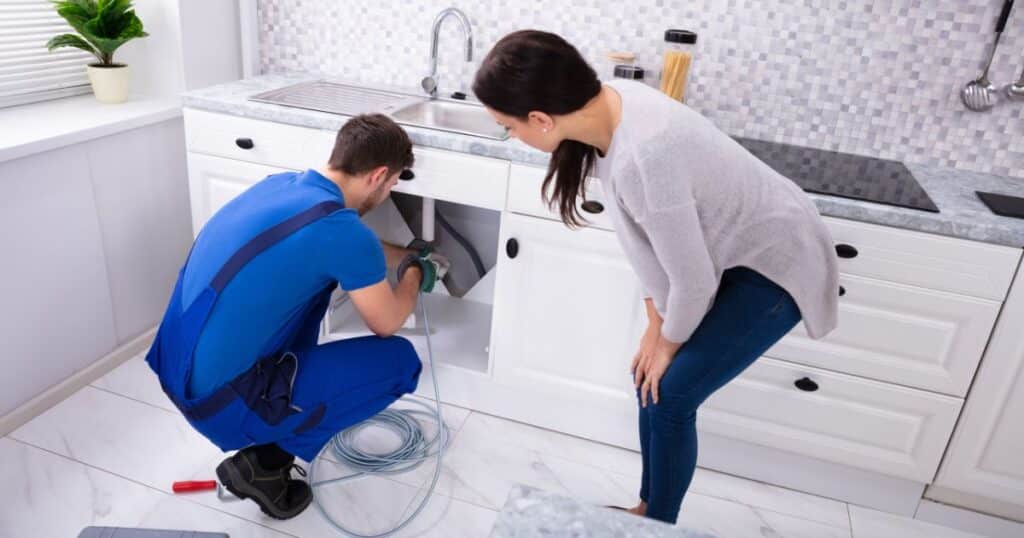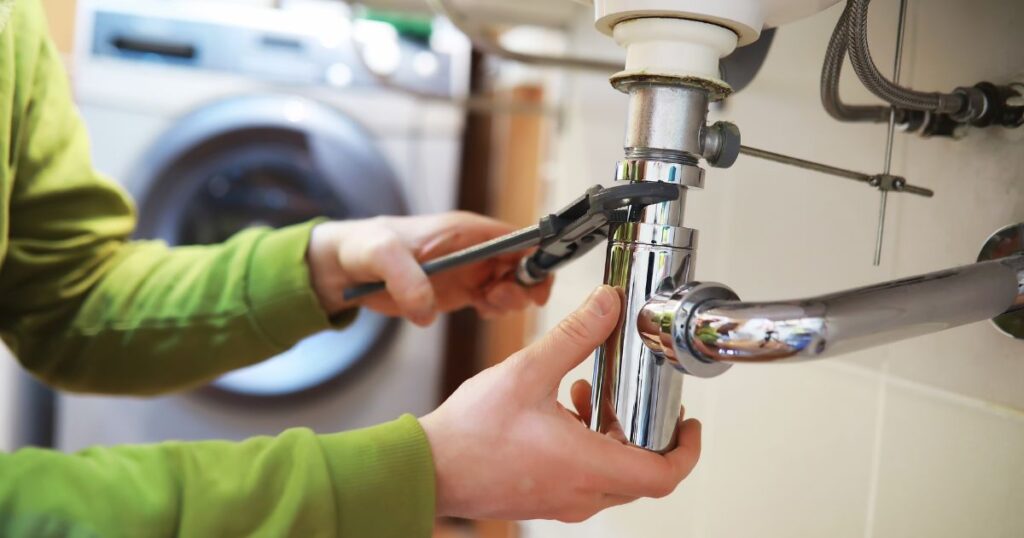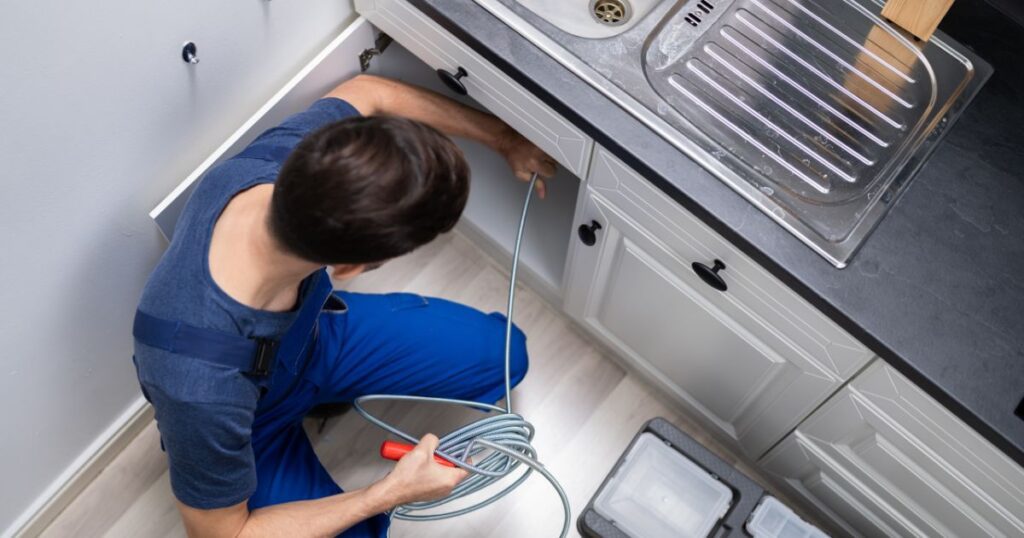
Drano Not Working
Are you tired of dealing with clogged drains and finding that Drano doesn’t do the trick? Well, you’re not alone.
Many people have experienced the frustration of Drano not working when it comes to stubborn clogs in their pipes. But fear not, for alternative methods may save the day.
One popular DIY solution is baking soda and vinegar to tackle those pesky clogs. Start by pouring a pot of boiling water down the drain to loosen any debris.
Then, sprinkle about half a cup of baking soda into the drain, followed by an equal amount of vinegar. The mixture will create a fizzing reaction that helps break down the clog.
Let it sit for about 30 minutes before flushing it out with hot water. This method can be effective for small clogs and is worth a try if Drano has failed you.
If your drain remains stubbornly clogged even after trying baking soda and vinegar, it might be time to bring out the big guns – a drain or plumbing snake. This tool consists of a long, flexible cable that can be inserted into your pipes to dislodge and remove obstructions.
To use it, feed the snake into the problematic drain until you feel resistance from the clog. Then twist and push while gradually pulling it back out, which should grab hold of or break up the blockage.
For those who don’t have access to a specialized plumbing snake, fear not! A wire coat hanger can be an effective makeshift tool in desperate times.
Bend one end into a small hook shape and insert it into your drain carefully until you reach the obstruction. Gently twist and maneuver the hanger to dislodge or hook onto whatever is causing the blockage.
Sometimes, when all else fails, it’s best to seek professional help if Drano is not working for you. Plumbers have the knowledge, experience, and specialized tools to handle even the most stubborn clogs.
They can use a more powerful drain snake or perform a thorough inspection of your pipes to identify and address any underlying issues that may be contributing to the clogs. Drano not working can be a frustrating experience, but it doesn’t mean you’re out of options.
From DIY remedies like baking soda and vinegar, to using a drain snake or even a wire coat hanger in a pinch, there are alternative methods that may save you from the headache of clogged drains. And if all else fails, don’t hesitate to seek professional help.
Clogged Drain
We’ve all been there. You’re in the middle of a relaxing shower, enjoying the warm water cascading down your body, when suddenly you notice something alarming – the water is rising instead of draining away. Panic sets in as you realize you have a clogged drain.
Before reaching for that trusty bottle of Drano, it’s important to understand why it might not always be the miracle solution we hope for. Let’s face it, drain clogs are a common occurrence in every household.
Hair, soap scum, and other debris can build up over time and obstruct the smooth flow of water down your pipes. When faced with a clogged drain, many instinctively turn to Drano as their go-to solution.
After all, it promises to dissolve tough clogs and get your drains running smoothly again. However, there are instances where Drano might not work as effectively as we’d like.
Drano may be ineffective on a clogged drain if the blockage is caused by something other than organic matter or greasy buildup. For example, if an object like a toy or jewelry has accidentally fallen down the drain and lodged within the pipes, Drano won’t be able to dislodge it.
In such cases, you may need to use tools like a plumbing snake or call in professional help. Another factor that could hinder Drano’s effectiveness is if the clog is located beyond the reach of its chemical properties.
Some plumbing systems are designed with intricate configurations that make it challenging for liquid solutions like Drano to penetrate far enough into the pipes where clogs might be hiding. These systems often feature bends and twists that prevent proper suction power from being generated by liquid solutions alone.
When Drano fails to unclog your drains, but you still want to try an alternative solution before seeking professional assistance – fear not! There are a few other methods you can attempt.
One popular approach involves using a mixture of baking soda and vinegar. Simply pour the baking soda down the drain, followed by a cup of vinegar.
Let it fizz for about 30 minutes before rinsing with hot water. If you prefer a more hands-on approach, you can use a plunger to dislodge stubborn clogs.
This method is particularly effective for clogs in toilets and bathtub drains. To use a plunger, ensure enough water in the fixture to create a seal around the plunger’s suction cup.
Place the plunger over the drain and give it several forceful plunges until you feel the blockage start to give way. Remember, if all else fails and your clogged drain remains unyielding, it may be time to seek professional plumbing assistance.
A trained plumber has the knowledge and tools to tackle even the most stubborn clog. Don’t be discouraged if Drano doesn’t work right away – sometimes, it takes a little trial and error to find the best solution for your plumbing issue.
So, next time you face a clogged drain, consider these alternative methods alongside Drano as possible solutions. With persistence and patience, you’ll soon have those pipes flowing freely again!

Baking Soda
When dealing with a clogged drain, sometimes Drano just doesn’t cut it. You pour that viscous liquid down the drain, expecting a magical transformation where all your problems disappear in a swirl of bubbling foam.
But alas, nothing happens. Don’t worry, though; there’s still hope!
One of the best alternatives to Drano is good old baking soda. Is a versatile and effective household remedy for many things, including tackling stubborn drain clogs.
To use baking soda for your clogged drain, remove the drain cover if you have one. This will give you better access to the clog and allow for easier unclogging.
Next, pour about half a cup of baking soda down the drain. Here’s where things get interesting: Take some vinegar (white vinegar works fine) and pour it slowly down the drain when the baking soda is already in there.
The vinegar will react with the baking soda and create a fizzy reaction that helps break down grease and other gunk, causing the clog. Let this magical mixture do its work for about 15 minutes or so.
After letting it sit, it’s time to take action! Boil some water in a kettle or on the stove until it’s nice and hot but not boiling over.
Carefully pour this hot water down the drain to flush out any remaining debris loosened by the baking soda-vinegar combo. Be cautious not to splash yourself with scalding water during this step.
If your clog persists after using baking soda and vinegar, don’t lose hope just yet! You can try other methods before calling in professional help or reaching for that plumbing snake.
One option is using a wire coat hanger – straighten it out as much as possible while leaving one end hooked like an L shape. Insert this makeshift hook into your drain carefully and attempt to fish out any debris causing the clog.
It might be time to call a local plumber if all else fails. They have the expertise and specialized tools to unclog even the most stubborn drains.
A plumber can use a plumbing snake, a long, flexible wire with a corkscrew-like end that can navigate your pipes and dislodge any obstructions. They can also assess if there’s an issue further down your plumbing system that requires more extensive repairs.
When Drano doesn’t work its magic on your drain clog, don’t despair – turn to baking soda as an effective alternative. Its simple yet powerful reaction with vinegar can help break down and dissolve stubborn clogs.
If baking soda doesn’t do the trick, use a wire coat hanger or seek professional assistance from a local plumber armed with their trusty plumbing snake. Remember, there’s always a solution to unclog that pesky drain!

Drain Snake
So you’ve tried using Drano, but that stubborn clog in your drain won’t budge. Don’t worry, you’re not alone in this battle. When Drano isn’t working its magic, it’s time to bring in the big guns – the trusty drain snake.
This handy tool can be a game-changer when tackling those pesky clogs. A drain snake, also known as a plumbing auger or a plumber’s snake, is a flexible, long metal coil designed to break up and remove clogs from drains.
It works by pushing the clog out of the way or pulling it back up through the drain. Before you grab one from your local hardware store, let’s explore how to use this tool effectively.
First things first – safety precautions! Ensure you wear gloves and have some old towels handy because things can get messy.
Start by locating the access point to your drain pipe, usually found under the sink or behind a toilet bowl. If there’s standing water in your sink or shower drain, remove as much as possible before proceeding.
Next, feed one end of the snake into the drain until you feel resistance. This is likely where that stubborn clog is lurking.
Slowly rotate the handle on the opposite end of the snake while applying gentle pressure downward. The idea here is twofold – to break up any solid debris and guide the snake past any bends or curves in your pipes.
As you continue rotating and pushing forward, pay attention to any changes in resistance or movement within the pipe. You may feel a sudden release as you pass through the clog or notice bits of debris being brought back up through the drain – both positive signs of progress.
If at first, you don’t succeed – try again! Some clogs may require multiple attempts with different techniques.
For instance, you can pull the snake back out slowly while rotating it to catch onto the clog and coax it back up through the drain. Alternatively, you can try short, rapid thrusts with the snake to dislodge the blockage.
Remember, if your efforts with the drain snake are unsuccessful or you’re uncomfortable performing this task yourself, it’s always a good idea to call in a professional plumber. They have specialized tools and skills to tackle even the most stubborn clogs.
When faced with a clogged drain that Drano isn’t working on, don’t despair – reach for a drain snake instead. This trusty tool can help break up and remove those troublesome blockages with patience and proper technique.
Just remember to take the necessary safety precautions and be prepared for some messiness along the way. And if all else fails, don’t hesitate to call in a professional plumber who can work their magic and get your drains flowing freely once again!

Shower Drain
When it comes to clogged drains, one of the most frustrating experiences is a shower drain that won’t clear. Picture this: You’re standing in the shower, enjoying a relaxing cascade of warm water, when suddenly you notice the water level rising instead of flowing down the drain. Panic sets in as you realize your shower drain is clogged, and Drano isn’t working magic.
So what do you do? First things first, don’t lose hope just yet.
A clogged shower drain can occur for various reasons – hair buildup being one of the most common culprits. Before reaching for harsh chemicals like drano or calling in professional help, try some alternative solutions that might save the day.
One effective method is baking soda and vinegar to create a homemade drain cleaner. Start by pouring half a cup of baking soda down your shower drain, followed by half a cup of vinegar.
Let this magical concoction fizz and work through the clog for about 15 minutes before flushing it down with hot water from another source. If homemade remedies aren’t your thing or if you’re dealing with an especially stubborn clog, it might be time to bring out the big guns – a trusty drain snake.
A snake is a flexible tool with a long coil that can reach deep into your pipes and break apart any obstructions causing the clog. To use a snake on your shower drain, remove the cover from your drain and insert the snake gently into it until you feel resistance.
Rotate the snake clockwise while gradually pushing it further into the pipe until you feel it break through any blockages. Continue rotating and pushing until there’s no more resistance.
Sometimes, despite all our efforts with drano alternatives and snaking tools, we still face an unyielding clog in our shower drains. In such cases, it may be necessary to dismantle parts of your plumbing system to access the clog directly.
This can involve removing the entire trap or waste tee, which connects your shower drain to the main plumbing system. Be prepared for this task to be slightly more challenging and potentially messy.
Remember, prevention is better than cure, especially regarding clogged drains. Consider installing a drain strainer or hair catcher to minimize the chances of encountering a stubborn shower drain clog.
These inexpensive devices fit over your drain and catch hair and other debris before they have a chance to cause trouble. So there you have it – a guide to dealing with a clogged shower drain when Drano isn’t working its usual magic.
From homemade solutions like baking soda and vinegar to using a snake or even dismantling parts of your plumbing system – there’s always an alternative route to unclogging that pesky shower drain. Remember to approach each method cautiously and seek professional help if needed.

Conclusion
If you find yourself in a sticky situation with a clogged drain and Drano fails to do the trick, don’t panic! You can try several alternative solutions before calling in a local plumber.
Remember, sometimes the most effective solution is just a trip to your nearby hardware store. One popular alternative to Drano is using baking soda and vinegar.
This natural duo can work wonders on stubborn clogs. Start by pouring half a cup of baking soda down the drain, followed by one cup of vinegar.
Let it fizz for 10 minutes before flushing it out with hot water. This method is not only eco-friendly but also safe for your plumbing.
Another option you can consider is using a drain snake or flexible cable. These tools are designed to reach deep into your pipes and manually remove the clog.
Simply insert the snake or cable into the drain and rotate it clockwise while applying gentle pressure. With a little patience and persistence, you can unclog your drains without relying on chemical solutions like Drano.
If you’re dealing with a clogged shower drain or bathtub drain, one simple trick might do the trick: boiling water. Boil several cups of water and carefully pour it down the affected drain in stages, allowing each pour to work its magic before adding more hot water.
The heat should help dissolve any soap scum or grease causing blockage. Sometimes, despite our best efforts, our drains remain stubbornly blocked.
If all else fails, it might be time to call for backup from a professional plumber with the expertise and specialized equipment to tackle even the most challenging clogs. A local plumber will have access to tools such as high-pressure water jets that can effectively clear out even the toughest obstructions.
Remember that prevention is key when it comes to avoiding future clogged drains. Regularly clean out debris from your kitchen sink and bathroom drains, avoid pouring grease or large food particles down the drain, and consider using drain covers to catch hair and other potential culprits.
These simple preventive measures can save you the hassle of dealing with clogs in the long run. So, while Drano may not always be the ultimate solution for your drain troubles, don’t lose hope.
Plenty of alternative methods are available to help you unclog your drains and keep them flowing smoothly. You can find a solution that works for you with a little patience and resourcefulness.
